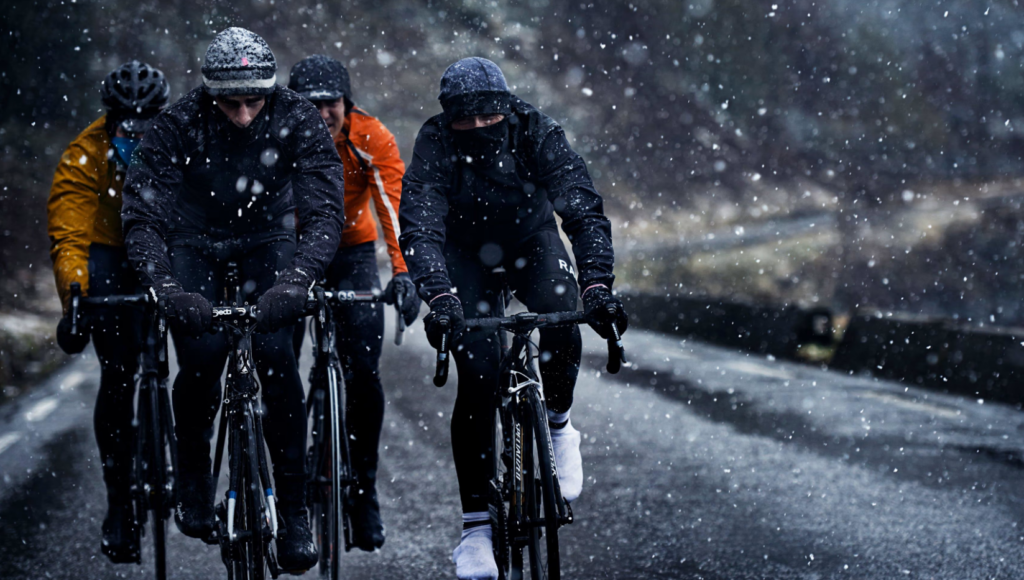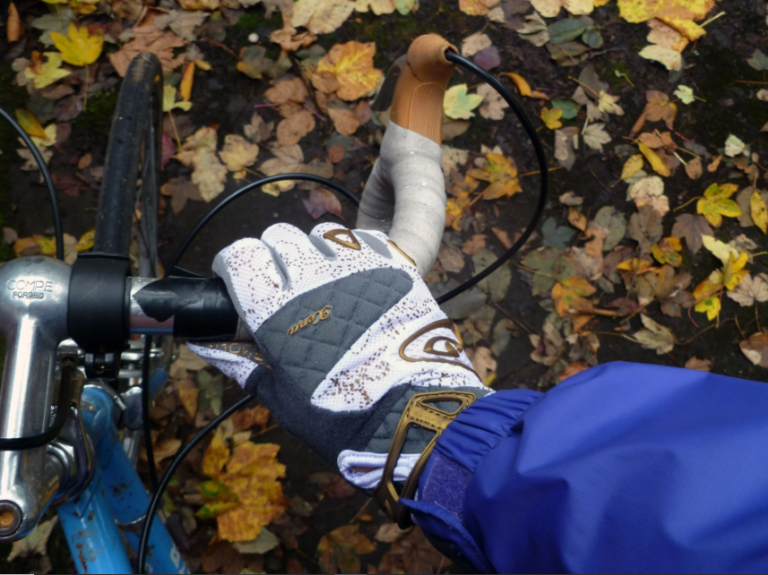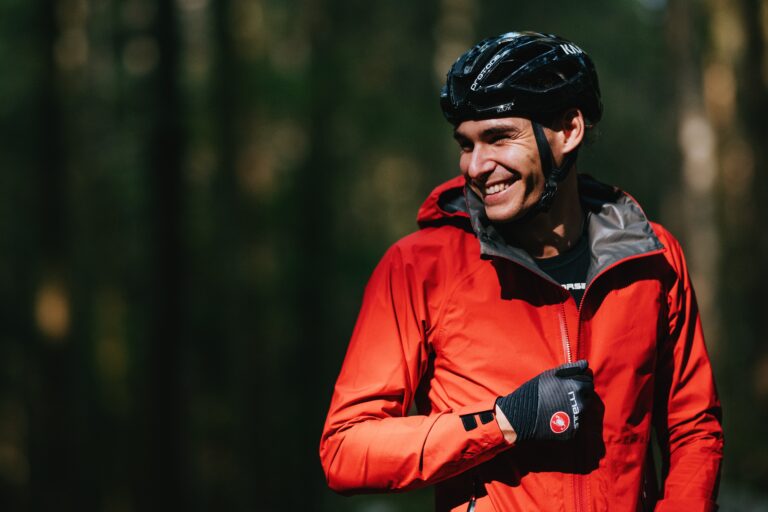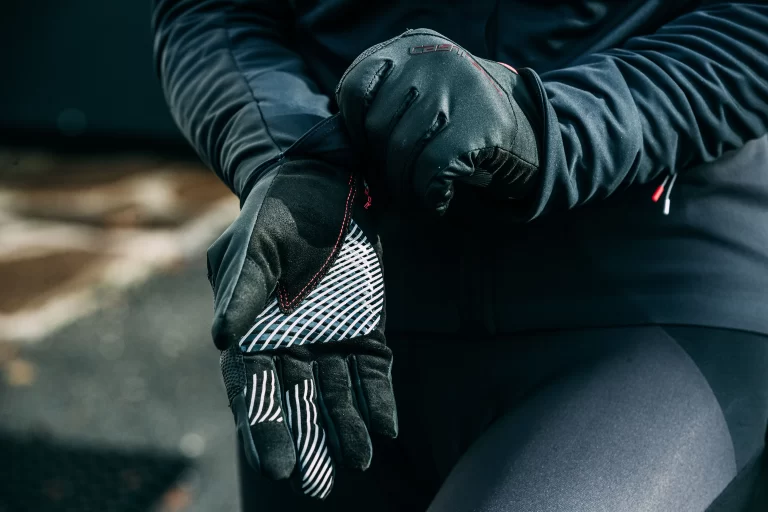Winter Cycling Glove Buyers Guide

Even in Southern California, cycling during the winter months requires the right gear to keep you warm, comfortable, and safe on the road. Among the essential equipment, a good pair of winter cycling gloves is crucial. These gloves are designed to protect your hands from the cold, wind, and moisture while maintaining your grip and control over the bike. I hope this Winter Cycling Glove Buyers Guide helps you make an informed choice when selecting winter cycling gloves:
Consider the Temperature Range:
Winter conditions can vary widely depending on your location, so it’s essential to choose gloves that match the typical temperature range you’ll be cycling in. Gloves designed for mild winters might not provide enough warmth in freezing conditions, so be mindful of your local climate.
- Lightweight Gloves (0°C to 10°C / 32°F to 50°F): Suitable for milder winter days, these gloves provide basic insulation and protection from chilly winds.
- Midweight Gloves (-5°C to 5°C / 23°F to 41°F): Ideal for most winter conditions, these gloves offer moderate insulation and are versatile enough for a range of temperatures.
- Heavyweight Gloves (-10°C and below / 14°F and below): Designed for extreme cold, these gloves have substantial insulation and are suitable for frigid temperatures.
Insulation:
The primary function of winter cycling gloves is to keep your hands warm. Look for gloves with effective insulation materials like:
- Thinsulate: A synthetic insulation known for its warmth-to-thickness ratio.
- PrimaLoft: Offers excellent warmth even when wet and is often used in high-quality gloves.
- Fleece: Provides warmth and comfort, often used as a lining material in gloves.
Waterproofing and Breathability:
To keep your hands dry, especially in wet or snowy conditions, choose gloves made from waterproof and breathable materials. Gore-Tex is a popular choice for its waterproofing and breathability properties. Proper breathability prevents moisture buildup inside the gloves, which can make your hands feel cold and uncomfortable.
Wind Resistance:
Windproof gloves are essential, especially on blustery days. Wind can significantly lower the perceived temperature, making your hands feel much colder. Look for gloves with windproof layers or materials to shield your hands from chilling gusts.
Fit and Sizing:
A proper fit is crucial for both comfort and dexterity. Measure your hand and refer to the manufacturer’s sizing chart to find the right size. Consider the type of fit you prefer, whether it’s a snug fit for maximum warmth or a slightly looser fit for improved dexterity.
Grip and Control:
Ensure that the gloves offer a good grip, even in wet conditions. Look for gloves with textured or grippy palms and fingers to maintain control of your bike’s handlebars, brakes, and shifters.
Closure System:
Consider the closure system of the gloves. Some options include:
- Velcro Straps: These allow you to adjust the fit for a secure closure.
- Elastic Cuffs: Provide a snug fit around your wrist to keep cold air and moisture out.
- Drawstrings: Cinch the gloves tightly around your wrist for added protection.
Touchscreen Compatibility:
If you frequently use a smartphone, GPS device, or cycling computer while riding, choose gloves with touchscreen-compatible fingertips. This feature allows you to operate your devices without removing your gloves, maintaining warmth and convenience.
Reflective Elements:
For safety during low-light conditions, opt for gloves with reflective elements. These can enhance your visibility to motorists and other cyclists, reducing the risk of accidents.
Durability:
Invest in high-quality gloves that are built to withstand the rigors of winter cycling. My advice in this Winter Cycling Glove Buyers Guide is to look for reinforced areas in high-wear zones, such as the palm and fingertips, to ensure longevity.
Price and Budget:
Winter cycling gloves come in various price ranges. While it’s tempting to opt for the most budget-friendly option, remember that investing in a quality pair of gloves is essential for comfort and safety during winter rides. Consider your budget and choose gloves that offer the features you need.
Trial and Testing:
If possible, try on the gloves before purchasing to assess the fit, comfort, and dexterity they provide. Each cyclist may have different preferences when it comes to glove types, so testing them out can help you make an informed decision.
Winter Cycling Glove Buyers Guide Maintenance:
Follow the manufacturer’s care instructions to ensure the longevity of your gloves. Proper maintenance may include hand washing, drying, and occasional reproofing for waterproof gloves.
By carefully considering these factors and choosing the right winter cycling gloves, you can enjoy a more comfortable and enjoyable riding experience during the colder months while staying warm and protected from the elements. I hope you’ve found this winter cycling glove buyers guide helpful. Happy cycling. John
Click here to find the best winter cycling gloves rated and ranked
FAQ’s
How to choose winter gloves?
Determine Your Needs:
- Consider the specific activities you’ll be doing in cold weather. Are you cycling, hiking, skiing, or just walking around town? Different activities may require different types of gloves.
Know Your Temperature Range:
- Understand the typical winter temperatures in your area or the region where you’ll be using the gloves. This will help you select gloves with the appropriate level of insulation.
Consider Waterproofing:
- If you’ll be in wet conditions, such as rain or snow, look for gloves that are waterproof or water-resistant. Gore-Tex and similar technologies are excellent for keeping moisture out while allowing sweat to escape.
Insulation Material:
- Check the insulation material used in the gloves. Common options include Thinsulate, PrimaLoft, down, and fleece. Thicker insulation provides more warmth but may sacrifice dexterity.
Windproofing:
- Wind can make cold temperatures feel even colder. Look for gloves that offer windproofing or wind-resistant materials to protect against wind chill.
Consider Activity-Specific Features:
- Depending on your chosen activity, you may need gloves with specific features. For example, cyclists might want gloves with grip-enhancing palms, while touchscreen-compatible fingertips can be useful for smartphone users.
Glove Types:
- There are various types of winter gloves, including:
- Liner Gloves: Thin, lightweight gloves designed to be worn under heavier gloves for added warmth.
- Softshell Gloves: Versatile gloves suitable for a wide range of activities, offering a good balance of warmth and dexterity.
- Hardshell Gloves: Designed for extreme weather conditions, these gloves are waterproof, windproof, and heavily insulated.
- Lobster Gloves: A hybrid design that groups fingers together for added warmth and dexterity.
Fit and Sizing:
- Ensure that the gloves fit well. Measure your hand size and refer to the manufacturer’s sizing chart. A proper fit should be snug but not too tight, allowing for some movement of your fingers.
Closure Systems:
- Pay attention to the closure systems. Some gloves have Velcro straps, elastic cuffs, or drawstrings to seal out cold air and moisture.
Grip and Dexterity:
- If your activity requires fine motor skills or control, prioritize gloves with grip-enhancing palms and fingers. Look for gloves with articulated fingers for better dexterity.
Reflective Elements:
- If you’ll be active in low-light conditions or at night, consider gloves with reflective elements for added visibility and safety.
Budget:
- Determine your budget for winter gloves. While it’s essential to invest in quality gloves, there are options available for various price ranges.
Try Before You Buy:
- If possible, try on the gloves before purchasing to assess the fit, comfort, and dexterity they provide. Some brands and models may fit differently, so it’s essential to find the right fit for your hands.
Read Reviews:
- Read user reviews and expert opinions to get insights into the performance and durability of the gloves you’re considering.
Consider Layering:
- In extremely cold conditions, layering may be necessary. You can wear liner gloves underneath heavier gloves for added warmth and versatility.
Remember that choosing the right winter gloves is a personal decision based on your specific needs and preferences. Prioritize warmth, protection, and comfort to ensure an enjoyable experience in cold weather conditions.
What to look for when buying cycling gloves?
Fit and Sizing:
- Proper fit is crucial for comfort and functionality. Measure your hand’s circumference and consult the manufacturer’s sizing chart to find the right size. Gloves that are too tight can restrict movement and cause discomfort, while those that are too loose may lead to reduced control and chafing.
Type of Cycling:
- Consider the type of cycling you’ll be doing. Different disciplines, such as road cycling, mountain biking, commuting, or touring, may require specific glove features. For example, road cyclists may prefer lightweight, aerodynamic gloves, while mountain bikers may prioritize extra protection and grip.
Season and Weather:
- Choose gloves suitable for the season and weather conditions you’ll encounter.
- Summer Gloves: Lightweight and breathable gloves with minimal padding for hot weather.
- Winter Gloves: Insulated and windproof gloves with added warmth for cold weather.
- All-Weather Gloves: Versatile gloves that can handle various conditions.
Padding:
- Cycling gloves often have padding in the palm area to reduce pressure on your hands and absorb shock. The amount and type of padding can vary, so choose gloves that match your comfort preferences.
Grip and Control:
- Look for gloves with grippy palms and fingers to ensure a secure hold on your handlebars, especially in wet conditions. Good grip enhances control and safety.
Material:
- Gloves can be made from various materials, including synthetic leather, leather, mesh, and neoprene. The choice of material affects durability, breathability, and weather resistance.
- Leather: Durable and comfortable but may be less breathable.
- Synthetic: Lightweight and breathable, often used for summer gloves.
- Neoprene: Provides warmth and water resistance, suitable for colder conditions.
Closure System:
- Gloves typically have closure systems to secure them around your wrist. Common options include Velcro straps, elastic cuffs, or pull-on designs. Choose a closure system that provides a snug and comfortable fit.
Finger Length:
- Cycling gloves come in various finger lengths, including full-finger, fingerless (short finger), and half-finger (typically covering only the first two or three fingers). Select the length that suits your riding style and comfort preferences.
Breathability:
- Good ventilation is essential to prevent your hands from getting sweaty and uncomfortable, especially in warm weather. Look for gloves with breathable materials and ventilation features.
Touchscreen Compatibility: – If you frequently use a smartphone or GPS device while riding, consider gloves with touchscreen-compatible fingertips. This allows you to operate your devices without removing your gloves.
Reflective Elements: – For enhanced visibility and safety, especially in low-light conditions, choose gloves with reflective elements or accents.
Durability: – In this Winter Cycling Glove Buyers Guide, my advice is to pay attention to the quality of construction and materials to ensure your gloves will withstand regular use and provide good value for your investment.
Brand and Reviews: – Consider reputable brands known for their quality cycling gear. Read user reviews and expert opinions to get insights into the performance, durability, and comfort of the gloves you’re interested in.
Budget: – Determine your budget for cycling gloves. While there are options available for various price ranges, it’s essential to invest in gloves that meet your specific needs and preferences.
By considering these factors and tailoring your choice of cycling gloves to your riding style and conditions, you can ensure a comfortable and safe cycling experience.
Here is a link to Castelli, our highest-rated product in this category.






